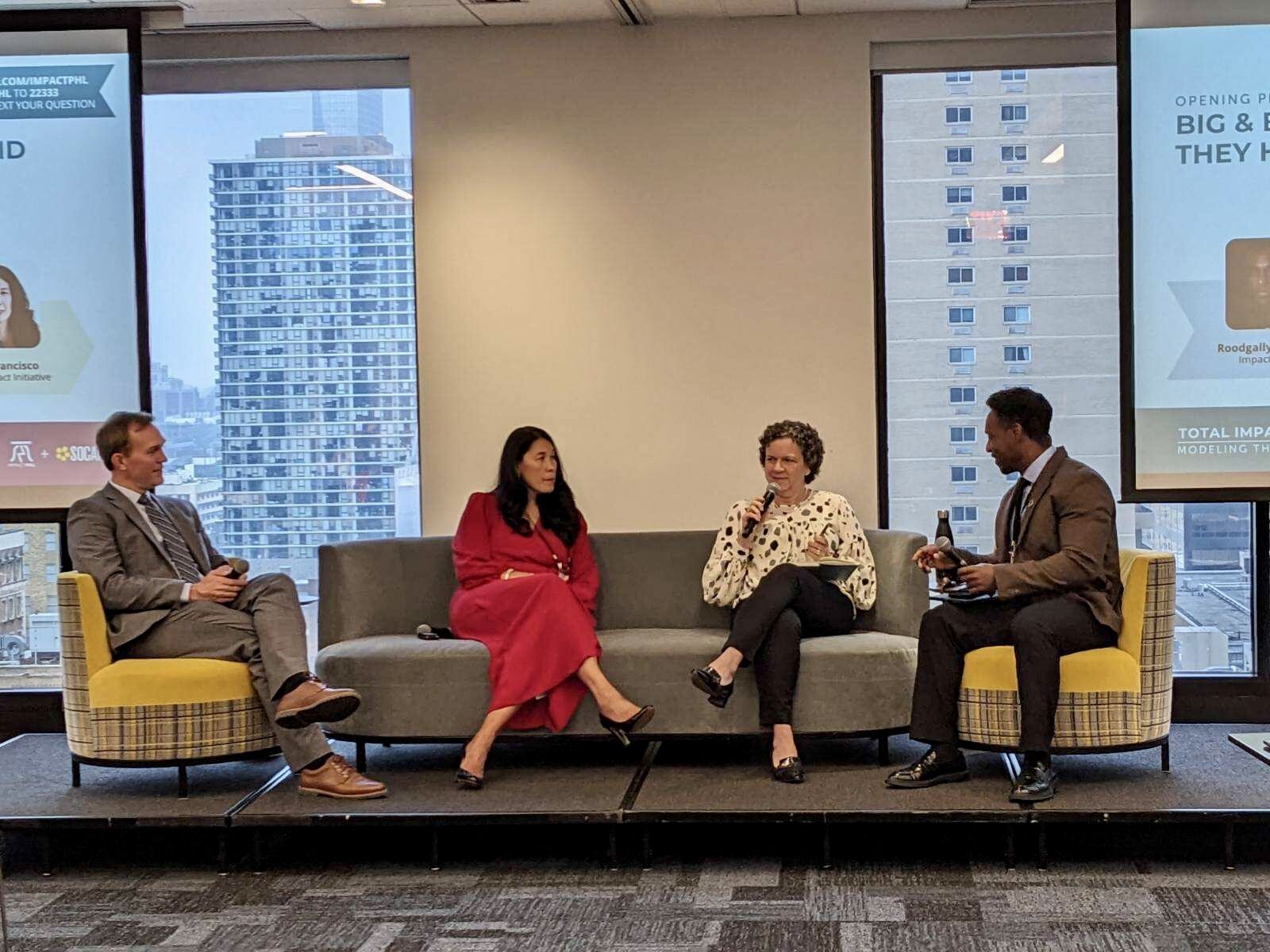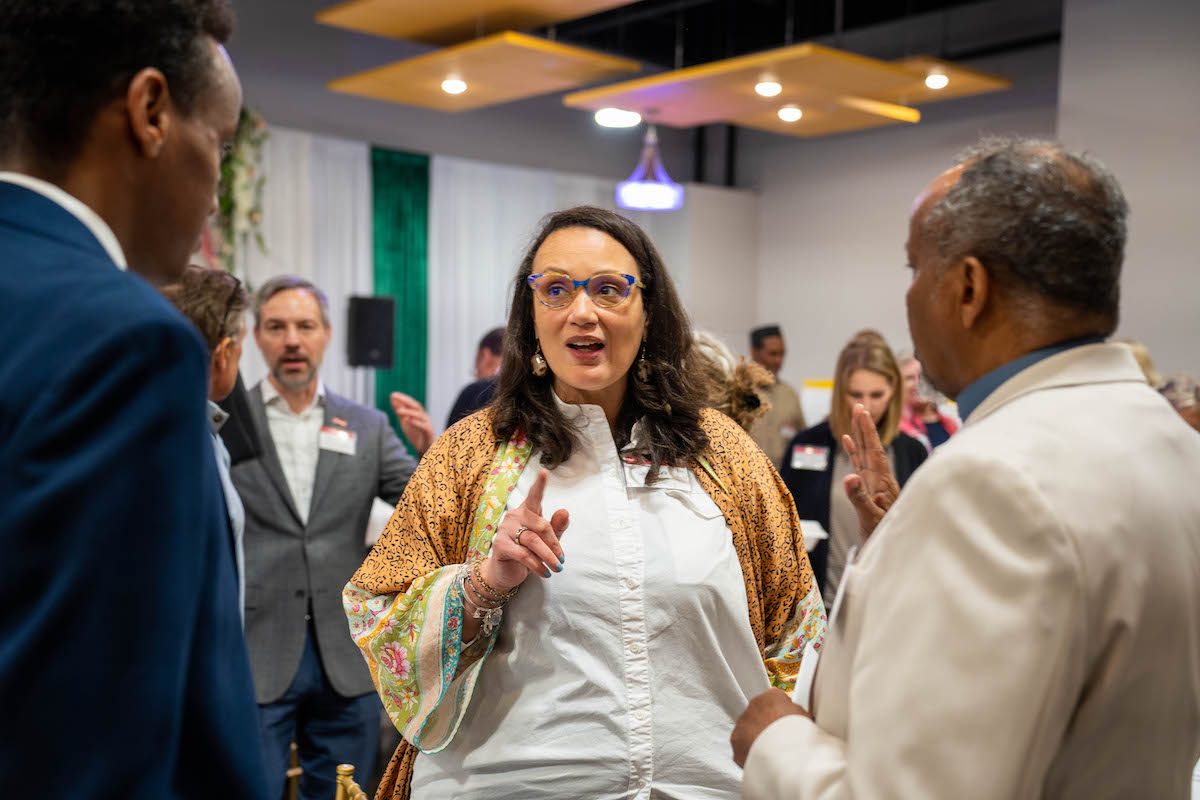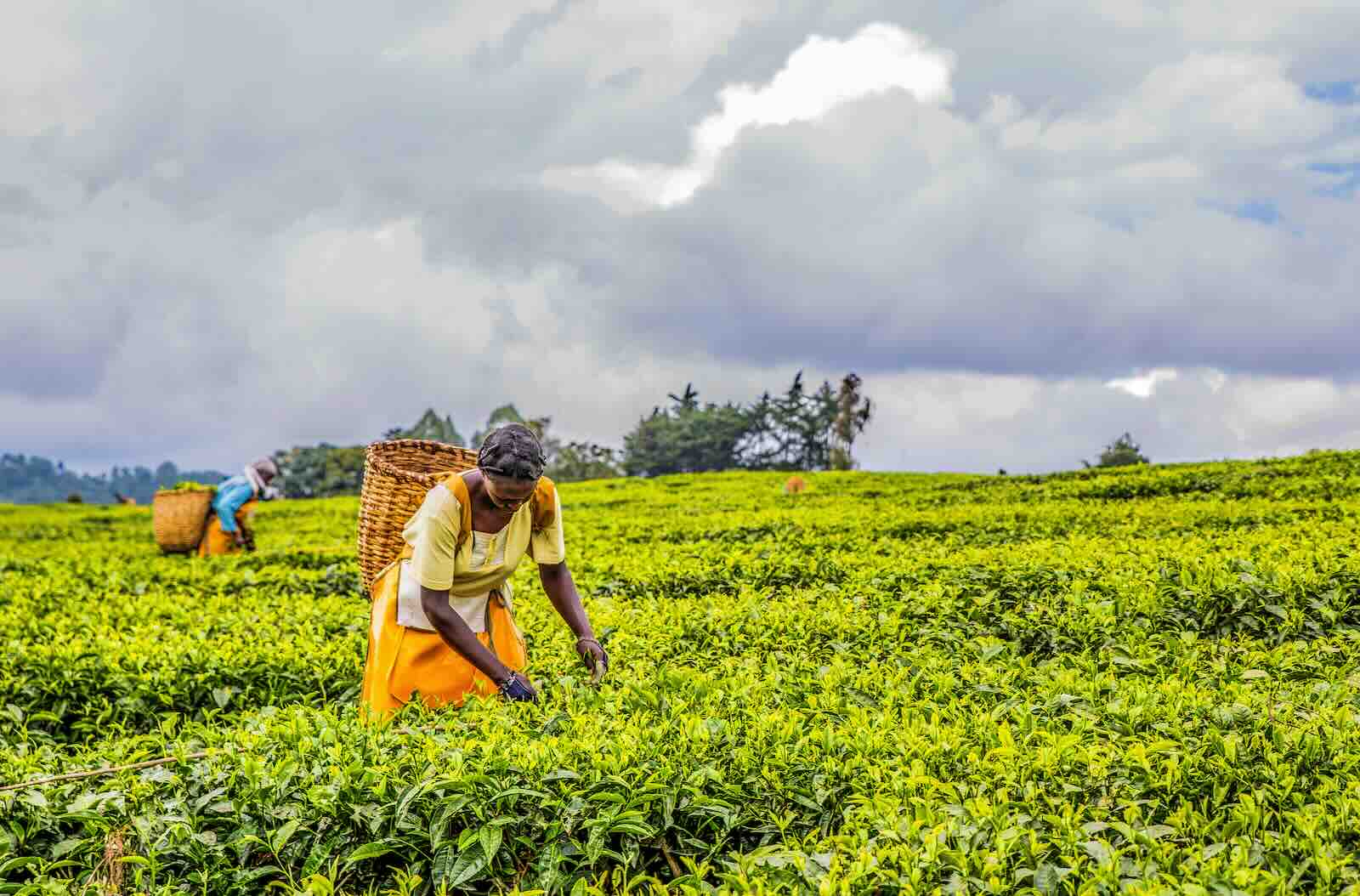Greetings, Agents of Impact!
Sustainable investing advice – for financial advisors. The time to head off that outflow of advisory assets is now. More than two-thirds of adult children and widows leave their family’s financial advisor after the death of a parent or spouse. Are you dispensable? Make yourself the family’s Agent of Impact in putting their money to work for their goals. Join ImpactAlpha’s Agents of Impact Call No. 8 with The Investment Integration Project’s William Burckart, Morgan Stanley’s Noel Pacarro Brown, State Street’s Brie Williams and Mark Sloss of Regenerative Investment Strategies, Thursday, April 18 at 1 pm ET / 10 am PT / 5 pm London. Register now.
Series: Impact en la Americas
Clínicas del Azúcar marries health innovation and affordability with one-stop diabetes centers. Clínicas del Azúcar helps low-income Mexicans manage their diabetes proactively and cost-effectively. More than 12 million diabetes patients in the country, including the mother of Clínicas founder Javier Lozano, struggle to keep on top of their diets, care plans and appointments with doctors and specialists. The burden is particularly heavy on low-income people in particular. “It’s a catastrophe,” Lozano told ImpactAlpha’s David Bank at the Foro Latinoamericano de Inversión de Impacto, or FLII, in February. “But the real catastrophe is the cost and difficulty of care.”
Under Clínicas’ subscription-based model, patients pay a single annual fee for 90-minute appointments with six specialists. One building houses all of the doctors, nutritionists and psychologists that patients need to see regularly, “a McDonald’s for diabetes care,” as Lozano calls it. He launched Clinicas’ first site in Monterrey in 2011. Now, a dozen clinics have treated more than 20,000 patients, making Clinicas the largest provider of diabetes and hypertension care in Mexico. Lozano is looking to use data to drive patient engagement, retention and positive health outcomes. “Typically innovations in healthcare increase costs, because they’re looking for better technology,” Lozano says. “The challenge is how we use innovation to reduce costs.”
Keep reading, “Clínicas del Azúcar marries health innovation and affordability with one-stop diabetes centers,” by Jessica Pothering on ImpactAlpha.
-
Watch ImpactAlpha’s David Bank’s interview with Javier Lozano of Clínicas del Azúcar. Catch up on the rest of the Impact en Las Americas series.
Dealflow: Follow the Money
Unitus Ventures, Dell Foundation back India education finance company Eduvanz. More than 70% of India’s unemployed youth struggle to pay for vocational and other skills courses to boost their career and earning potential. Mumbai-based Eduvanz aims to make workforce training more accessible by offering low-interest loans for students to get training from tech skills to carpentry and other trades. Eduvanz has established more than 80 training partnerships and has loaned 1,000 students a total of 120 million rupees ($1.7 million). The startup raised $2 million from Unitus Ventures and the Michael & Susan Dell Foundation and aims to grow its loan portfolio and student reach 10-fold by 2020. Read on.
Carbon Yield Fund for midwestern farmers takes the prize in sustainable investing challenge. Over the years, the Kellogg-Morgan Stanley Sustainable Investment Challenge has helped spawn funds such as Blue Forest Conservation and Fresh Coast Capital. This year’s $10,000 first prize went to a team from the Kellogg School of Management at Northwestern, which designed the Carbon Yield Fund to finance midwestern farmers to make the transition to organic farming. Loans to farmers to help them through the certification process would be returned through carbon offsets generated by emission reductions from regenerative agriculture. The competition, now in its ninth year, drew teams from 80 graduate schools that developed financing vehicles for sustainability and impact challenges in 31 countries. At the finals in Hong Kong, second-place went to a mixed team of students from Johns Hopkins, Columbia, Duke and MIT. Their Grey to Green Fund would aggregate hotels’ greywater infrastructure in order to reduce water consumption. More.
Signals: Ahead of the Curve
Cities and investors de-mystify the Opportunity Zone capital stack. Conversations around Opportunity Zones have matured from what to how as deadlines loom for claiming full tax benefits. The absence of detailed federal guidance has spurred the kind of bottom-up market-making championed by the late Jeremy Nowak. The evolution of the Opportunity Zone opportunity will be driven by “market norms and policy and practice innovations that are invented in one city and then replicated or adapted in rapid fashion across multiple communities,” write Lori Bamberger and Bruce Katz in “Voices from the Field: How Financial Innovation Can Enable Inclusive Opportunity Zones.” Some takeaways from the catalog of emerging deals, capital structures, stakeholder roles and incentive mechanisms:
- Projects must pencil. There are three kinds of Opportunity Zone real estate projects, says Rachel Diller of Hunt UrbanView. Some would have earned sufficient returns without the OZ incentive. Others won’t work without additional subsidies like low-interest loans. And then there are those on the bubble, projects with sufficient returns thanks to the Opportunity Zones incentives. Reducing the capital gains tax burden can push certain projects over the line without the need for government or philanthropic subsidy, says Shekar Narasimhan of Beekman Advisors.
- Capital stacks. Tools exist to structure capital for affordable housing, civic centers, infrastructure, renewable energy, innovation districts, health care and educational institutions and other municipal projects. In the toolkit: reduced-cost public land, patient-capital loan funds, credit enhancements and guarantees, and city procurement. “These tools are well-honed,” says Jeanne Engel, a former deputy commissioner of the U.S. Federal Housing Administration.
- Typical investors. The early Opportunity Zone investor is likely to be “a capital gains-focused investor with both capital preservation and appreciation as motivating investment goals,” says Michael Novogradac of Novogradac & Co. For ‘slow and steady’ investors like multibillion-dollar family offices or impact investors, Opportunity Zone investments might mean new equity structures but not new investment targets.
- Open season. The absence of detailed federal regulations opens opportunities for integrated, interdisciplinary plans, says Graham Richard, former mayor of Fort Wayne, Ind. Think clean energy affordable multifamily housing, or mixed-use university health care and housing facilities. ‘Dead’ shopping malls can be converted into community solar- or wind- power plants and storage facilities. Cities should “create an interdisciplinary prospectus,” says Access Ventures’ Bryce Butler, and then “pull together capital from all different sources and see how they play together.”
- Share this post.
Agents of Impact: Follow the Talent
Ashoka is hiring a managing director for its Start Empathy program in London… The Aspen Network of Development Entrepreneurs is looking for a senior program coordinator in Bangalore… Wine industry body Winetechand the SA Innovation Summit launch the “Winetech Pitching Den” competition for startups focused on climate change, water reclamation and resourcing, genetics, machine learning, artificial intelligence, big data and other approaches to help South African wine producers.
— April 16, 2019.











